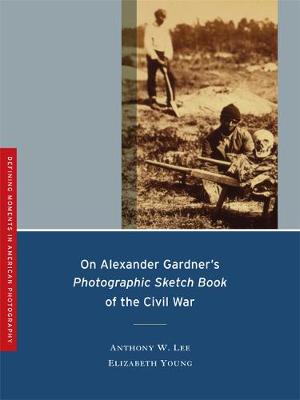Defining Moments in American Photography
2 primary works
Book 1
On Alexander Gardner's Photographic Sketch Book of the Civil War
by Anthony W Lee and Elizabeth Young
Published 5 January 2008
Soon after Alexander Gardner's "Photographic Sketch Book" was published, in 1866, it became the Civil War's best-known visual record and helped define how viewers, then and in subsequent generations, would come to know the war. Gardner's classic also became foundational in the history of American photography, combining, for the first time, words and images in a sophisticated and moving account. This book, written by the art historian Anthony W. Lee and the literary scholar Elizabeth Young, interprets the story of the war as told by Gardner, unraveling his careful choice of words and images and the complicated play between them, and understanding them against the backdrop of the literary and photographic cultures of the American antebellum and Reconstruction eras. This book presents a unique study of a pivotal American historical document, approaching it from the perspective of visual studies as well as American literature and history.
Book 3
Arthur Fellig, better known as Weegee, and his 1945 photography book, "Naked City" - with its lurid tabloid-style images of Manhattan crime, crowds, and boisterous nightlife - changed prevailing journalistic practices almost overnight. In this volume, two art historians, Anthony W. Lee and Richard Meyer, bring markedly different outlooks on photography and modernism to their discussions of Weegee and his book.Meyer looks carefully at Weegee's pictures before and after they were collected and assesses how his practice of tabloid photography was inseparable from his own lowbrow appeal. Lee paints the vivid details of a leftist journalism world in 1930s and 1940s New York and shows how this world helped shape the photographer's vision. These essays restore the "Naked City" photographs to the mass circulation newspapers and magazines for which they were intended, and they trace the strange process by which the most famous of these pictures - suffused with blood, gore, and sensational crime - entered the museum.

